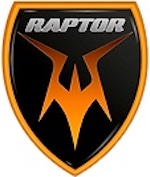THE STORY OF SCUDERIA FILIPINETTI
The Story of Georges Filipinetti and SCUDERIA FILIPINETT
Scuderia Filipinetti was one of those teams that always popped up in international motorsport (usually sportscars and world endurance, in this case) in the sixties without ever really setting the world on fire. However, their cars were always of the highest quality and immaculately turned out.
The man behind the team was a mercurial character, a chain smoker called Georges Filipinetti, who hailed from Switzerland where he was a very successful businessman who also had a passion for motorsport. Described as a property developer he was mainly known for being the Swiss importer for Ferrari.
Pre-war, Filipinetti had raced for the Ecurie Genovoise (Rallye Geneva) team driving Maseratis. After the war, he helped elevate them to international status. The word ‘pushy’ was said to be perfectly descriptive of Filipinetti.
By the early sixties, Georges had been appointed president of the Swiss Karting Association. Somehow, he’d also managed to blag his way into being San Marino’s representative at the United Nations in New York!
It was via his SAVAF (Societe Anonyme Pour La Vente des Automobiles Ferrari) company that he imported Ferraris to his homeland. Georges wife Marthe (née Armleder b 1910) had previously been married to Swiss racing driver Ciro Basadonna and as a result, she was also heiress to one of Geneva’s swish hotels, the Le Richmonde Geneve. Basadonna was the Swiss Maserati importer, incidentally.
It was 1960 when a young Swiss motorcycle racer Joseph ‘Jo’ Siffert (better known as ‘Seppi) won the Swiss 350cc motorcycle championship and graduated to four wheels. It was when he switched to Formula Junior in a Stanguellini that he came to the attention of Georges Filipinetti. Indeed, he began to mentor 24-year-old Seppi.
Siffert’s debut in F1 came at the Monaco Grand Prix of 1962 in a car dubbed as a Lotus-Climax Special. Basically, it was the front end of a Lotus Type 21 (chassis and suspension) with the rear of a Type 24.
Typically grandiose, as if to announce his arrival on the world stage, Filipinetti rather pompously entered Siffert under the Ecurie National Suisse banner, or the Swiss National Team, basically.
By the end of first practice, however, the Automobile Club de Suisse had told Filipinetti in no uncertain terms that he needed to change his team’s name. By the time qualifying had started, the cars were running under the Ecurie Filipinetti name!
It wasn’t long before one of Georges SAVAF employees suggested that as Ferrari’s importer, he should make his team sound more Italian, hence the further revision to ‘Scuderia Filipinetti.
Seppi qualified in 13th on his debut (out of 22 entries) but thanks to the often-mystifying regulations back then, eleven of the starters including Siffert (and Jack Brabham!) had to qualify on speed rather than on lap time. Only the top six of them would get in. Siffert was 7th, albeit seven seconds behind Roy Salvadori.
Even though the rules had resulted in Siffert having ‘DNQ’ placed next to his name, Filipinetti was delighted at his performance, even though they regularly clashed he was sufficiently encouraged to buy a brand-new Lotus 24 with BRM V8 engine.
Something that has always been said about Filipinetti is that he always bought the very best equipment and his cars looked immaculate in their blood-red livery with white stripes. Whatever the mechanics told him was required he’d not hesitate to buy what was needed rather than patch a car up.
The eye-catching livery was also seen in Formula 3, Formula Junior (Lotus 22) on a Porsche 718 RSK in sportscar racing and for the GT class he went out and bought the Count Volpis ex-Serenissima Scuderia Ferrari 250 GTB.
They first entered the Le Mans 24 Hours race in 1963. Filipinetti fielded an Alfa Romeo Giulietta GZ for Swiss drivers Karl Foitek and Armand Schäfer to drive (they retired on lap 7) while a second car, an ASA 1000GT for Herbert Müller and Jean-Jacques Thuner didn’t make the start.
Siffert really pleased the boss when he won the non-championship, but high-profile Syracuse Grand Prix on the island of Sicily also in 1963. Siffert had other ideas about the following weekend however and eyed up the big prize money on offer at the Rome GP at Vallelunga rather than compete for Georges at Monaco.
He argued that he owned the car, not Filipinetti, so he could race where he wanted. Georges disagreed, countering that as he was paying the expenses and Siffert was competing under his team’s name, he called the shots.
Even though Siffert had entered the Vallelunga race under the Siffert Racing Team name, Filipinetti angrily complained to the Swiss Automobile Club who managed to get Siffert’s entry revoked.
Filipinetti was very angry and ‘ordered’ Siffert to report to Monaco for qualifying on the following Thursday. On the way to the principality, there was an accident and the Lotus 24 fell off the trailer bending the chassis. A hasty repair was made and Siffert qualified in 12th but his engine blew up on lap three of the race.
Relations between Siffert and Filipinetti were always said to be strained but when Georges accused him of gross misconduct, Seppi left with immediate effect. He’d later sign for Rob Walker’s team.
From then on, Scuderia Filipinetti mainly concentrated on endurance sportscar racing with their best result winning the Targa Florio in a rain-swept race in 1966 with a driver team of Willy Mairesse and Herbert Müller.
There were other outings with other cars including Ford Mustangs and Georges would often collaborate with privateers to enter races, so Jo Bonnier entered his Cooper Monaco F1 car under the Filipinetti name, for example.
It was at Le Mans where the team was ever-present between 1963-1972, with a variety of cars and drivers entered in the gorgeous bright red and white Filipinetti livery.
Some years they’d enter as many as five cars. The best result at Le Sarthe came in 1965 when Swiss drivers Dieter Spoerry and Armand Boller came home 6th in a Ferrari 250LM. Other cars entered by the team at Le Mans included Porsche 904, Daytona Cobra, Ford GT40, Corvette C3, Lola T70 and a raft of other Ferraris including a 275 GTB Competizione.
To confuse matters Filipinetti also entered a team under the SEVAF name at times! Drivers included Reine Wisell, Bonnier and Mike Parkes, who also doubled as the team’s technical director.
When Georges couldn’t afford to buy a March 722 for Formula Two in 1972 his sponsor, Antar paid for it. This is the reason that car ran in a blue livery but was still under the Filipinetti banner.
For the 1972 and 1973 seasons, the team entered the Sports Prototype championship as well as some French domestic events. The car was a Lola T292 2-litre with Jean-Louis Lafosse and Gérard Pillon doing the driving in 1972 and for 1973 it was Reine Wisell and Huges de Fierlant.
When old Georges died on May 3, 1973, the writing was on the wall, although not many thought that it would all be over within a month. In a typical Filipinetti tale, no one knew for sure how old he was when he died. He could have been 65 or 72!
His son Jean-Pierre was sadly out of his depth, struggling with an already crumbling business and property empire that was saddled with debts. He tragically committed suicide in 1987 leaving a wife and two children. His mother Marthe had previously also taken her own life in 1976.
Well-known designer Franco Sbarro (born Francesco Sbarro in Italy) had worked for Georges Filipinetti as a mechanic/designer but left to start his own company in 1968.
While at Filipinetti Sbarro had built the Filipinetti 1 based on a Karmann Ghia in 1965, superseded by the Filipinetti 2 in 1967. He later created the ASA in 1968 once he’d started his own company, Atelier de Construction Automobile. His later ‘Dominique III’, commissioned by Pierre Yves Mourges d’Alges (a Swiss banker) was based loosely on the Filipinetti 2. The car was named after his wife.
Prior to concentrating on show cars and his design school, Sbarro Espera School of Design, he produced a few replicas, some in kit form, too including 135 BMW 328 replicas, Lola T70, Ferrari P4 (under the Filipinetti name) Bugatti Royale, Porsche Speedster and Mercedes-Benz 540K replica.
There’s a brilliant book called ‘Scuderia Filipinetti’ by Ed Heuvink which charts the history of the man, the company and the team. Sadly, it’s long out of print but if you ever see a secondhand one for sale, grab it. An outstanding effort.
| Print article | This entry was posted by admin on November 16, 2023 at 6:05 pm, and is filed under Uncategorized. Follow any responses to this post through RSS 2.0. Both comments and pings are currently closed. |
Comments are closed.
















